St. Vincent is said to be the muck diving capital of the world. To be honest, I approached this muck diving with some trepidation. I imagined that we would be digging through an ocean bottom made of dark black goo. Fortunately muck diving is a sort of tongue-in-cheek description of bottom diving in general. There was no black goo. Rather, we were diving on sandy or grassy bottoms. Often, the bottoms were connected to or adjacent to conventional reefs, so many of the dives included a bit of bottom diving along with some reef diving. We even did a wall dive, looking for lobster.
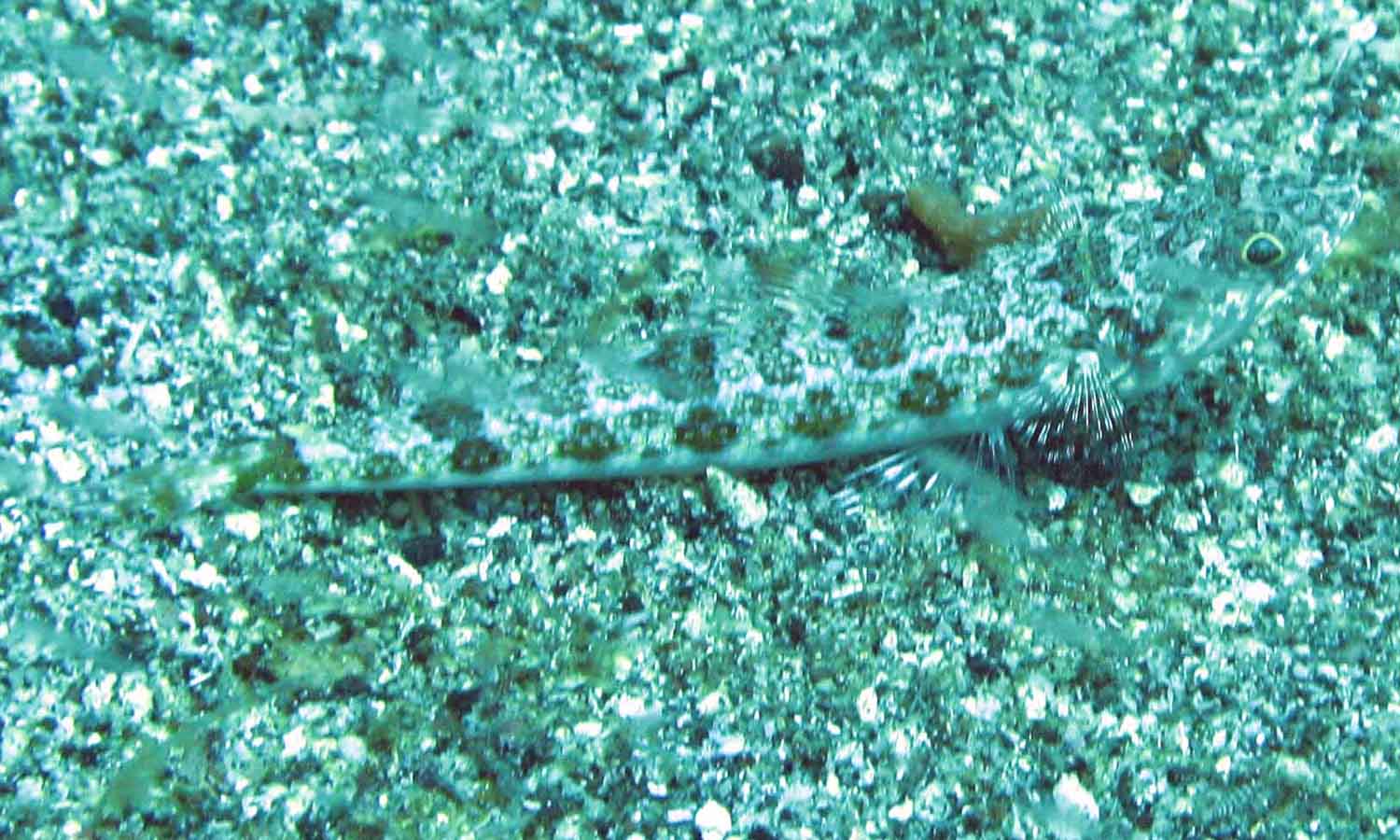
Unlike Bonaire, St. Vincent is not a marine reserve, so most of the large fish have been fished out. On several occasions, we had to compete for dive sites with local fishermen, who would fish with nets. I'd guess I saw no more than 500 fish more than a foot long, not counting the trumpet fish. I guess that trumpet fish are not good eating, or else can wiggle through fishermen's nets, because they were large and abundant. I saw a few varieties of trumpet fish I had not encountered before, including some that were yellow and one with a blue head.
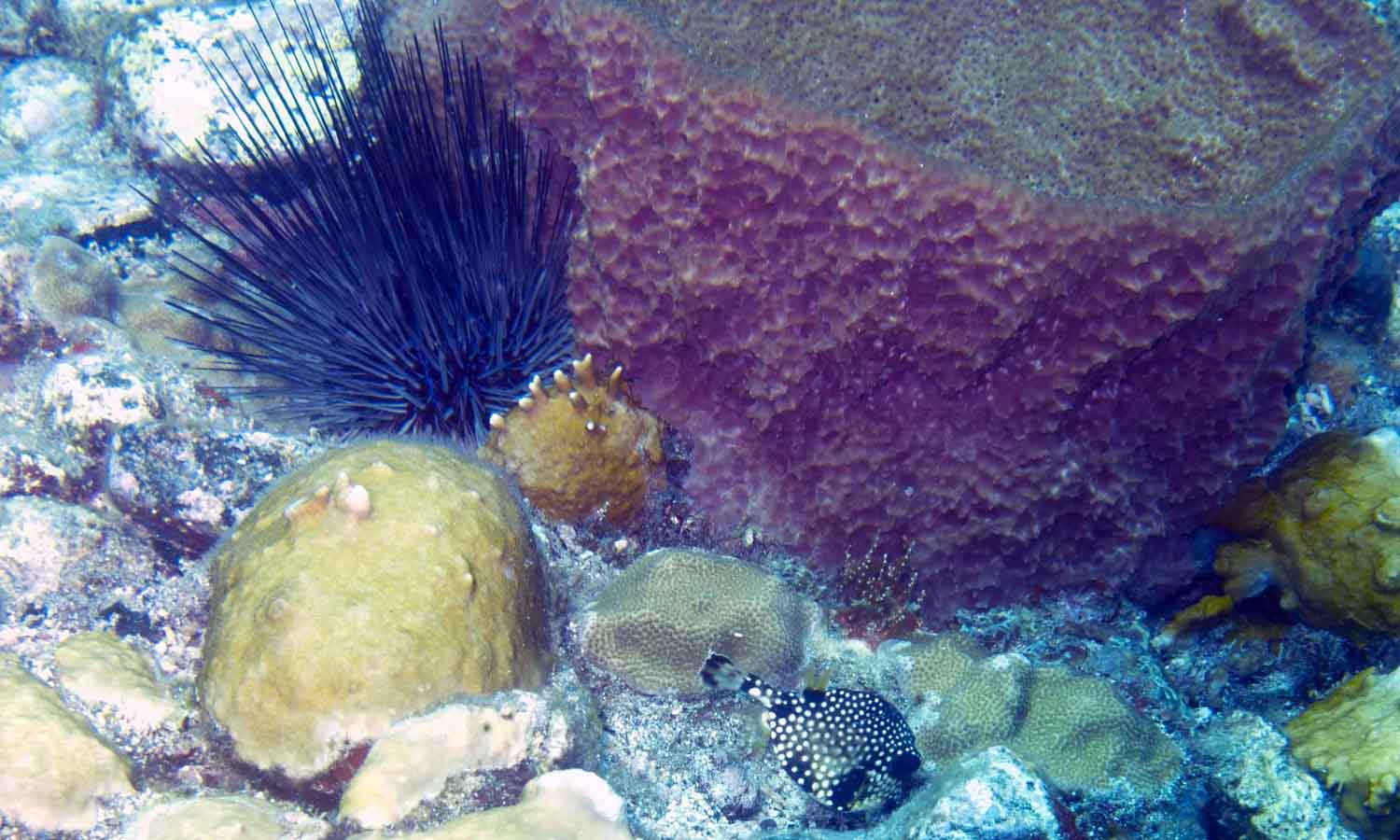
Speaking of wiggling, there were numerous varieties of moray eels, including some that were black and white or yellow and white. There were also some sharptail eels that were light brown with white spots. There were also some varieties of sea cucumbers I had not seen before. One of our divers noted that one looked like a roll of Toll House cookie dough.
Sea urchins were also plentiful. The most common ones were jet black, with very long spines. Sometimes the bodies had streaks of electric blue or, less commonly, red. Also in the sea urchin family are West Indies sea eggs, which were also plentiful especially in the grassy areas in critter cove Bottom dwelling fish were also common, including scorpion fish and lizard fish. Less common were frog fish and flying gurnards with electric blue stripes on their wings
I was very impressed with the colors of variegated sea worms. I observed them in white, yellow, pink, purple, and purple and with white stripes. They had oval mouths with fringes around the outsides like eyelashes. In addition, there were amazing feather dusters. These feather dusters were so large they looked like they could really do some serious dusting. Maybe I should have brought one home for my house!
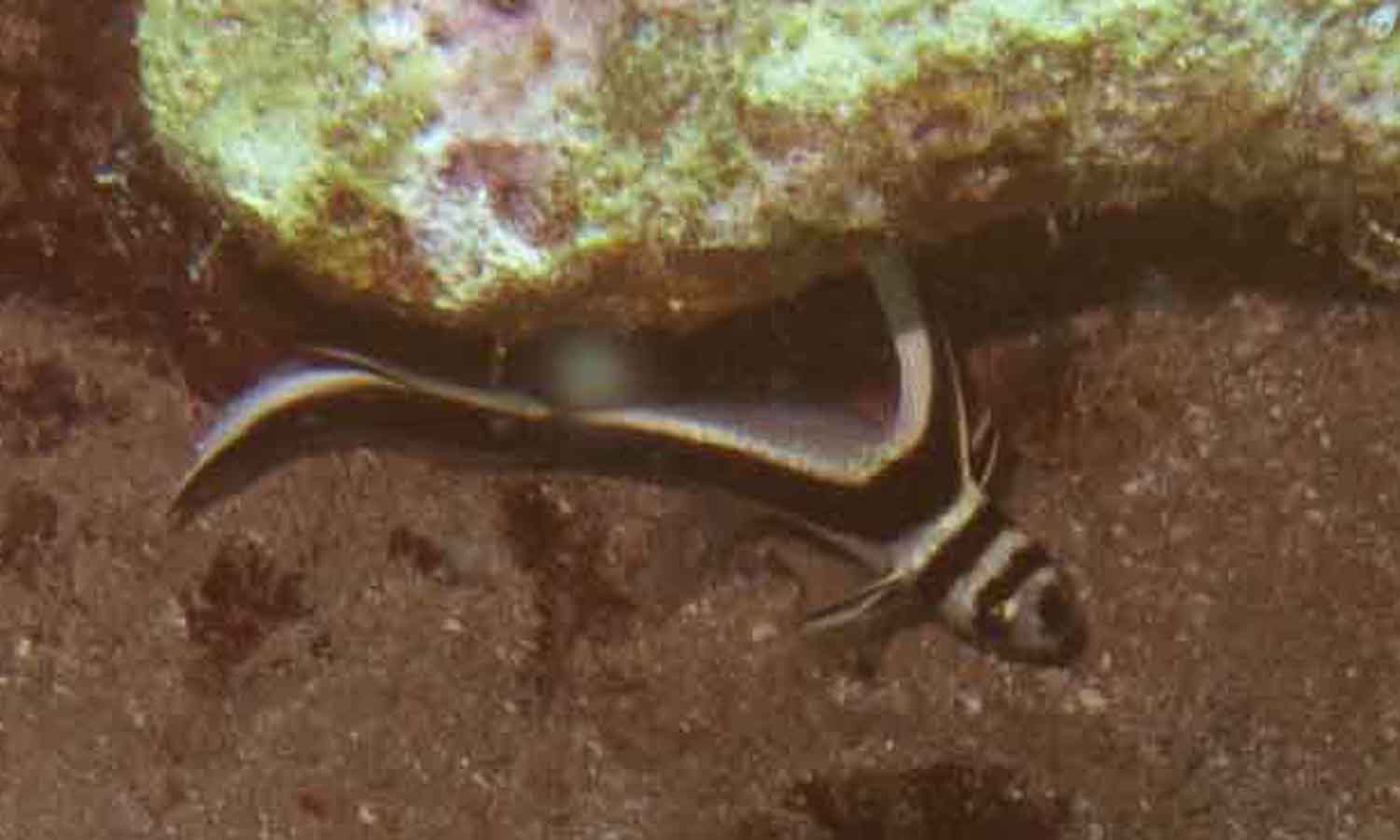
Dive St. Vincent is owned and operated by Bill Tewes. He's got a reputation as a crusty old curmudgeon. I can see how he might rub some people the wrong way, but he's quite knowledgeable about marine life, with a particular emphasis on St. Vincent. He was our guide for every day but two. On one day, he needed to go off island to a wedding. On the other, the guests on the other boat demanded his presence. They said that they had come to St. Vincent to go critter diving with him, and this was their last day. How could he refuse?
On one occasion, I was on the bottom, with my knees in the sand pondering the following question: I wonder if Bill Tewes said to himself I've bought a dive shop on the only island in the Caribbean with no fish. Now what? If nature hands you lemons, make lemonade. Let's look at the small stuff.
Or is it the case that St. Vincent is truly an unusual case, with incredible bio-diversity seen nowhere else on the planet? I guess there's truth to both. If people elsewhere spent less time looking at the pretty big fish and looked closely at the small stuff, they might find incredible bio-diversity too. At the same time, it should be acknowledged that many of the creatures we observed at St. Vincent were noted as rare in the Paul Humann book or else were (as Bill Tewes described them) NIBs. Not in book. He discovered and photographed a variety of sea horse never cataloged before.
While I was on my knees, pondering these existential questions, I looked around and noticed that there was a fairly large, yellow sea horse a couple feet away. Sea horses are fairly rare in the wild. As a child, there was a gift shop in my home town on Cape Cod, called the Seahorse. I remember there was a large box, possibly a treasure chest, filled with hundreds of dried sea horses. Perhaps, that is why sea horses are now rare.
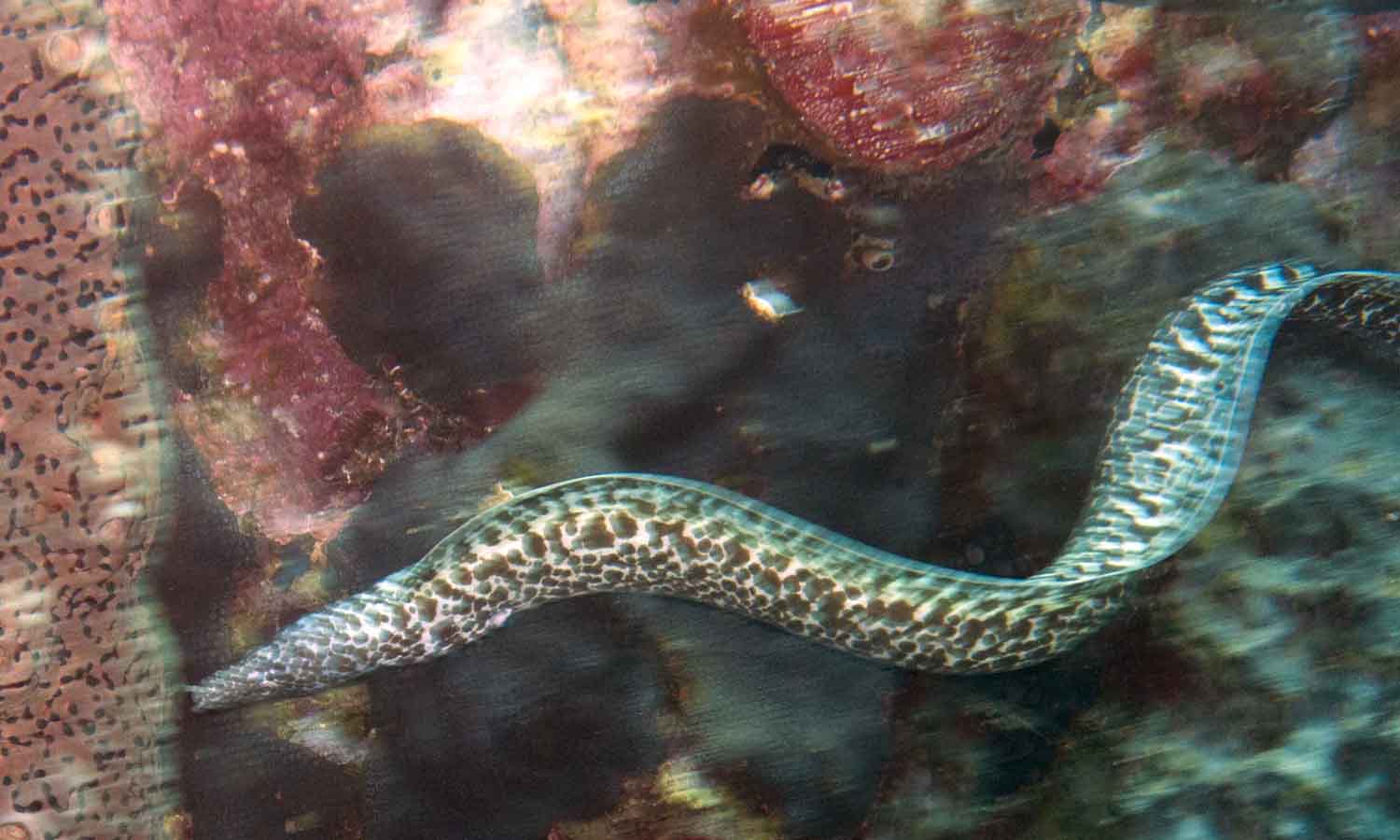
A goal if mine is to see a new variety of fish on every dive or at least on every dive trip. Bill added tobacco fish to my repertoire on one day. A few days later, I found a school of them. They're pretty cool. Copper on the bottom, white with brown spots on top.
Here is a list of other things that Bill pointed out over the course of a week: Southern cryptic teardrop crabs, juvenile pipefish, bluebar jawfish and jawfish with eggs, yellow arrow crab with eggs, juvenile yellow cheek wrasse, juvenile cow and box fish, various lettuce nudibrach, snapper eel, black ear wrasse, cardinal fish, golden-phase coney, pedersen cleaning shrimp, shrimp gobies, cherub angelfish, juvenile grey angelfish, spotted hawkfish, pea crab, snapper shrimp, bristle worm eating fire coral, squat lobsters, fingerprint cycloma (cowrie), bucktooth parrotfish, unusual infant slipper lobster, etc. Bill has an underwater slate that is invaluable for identifying marine life, and this list came from Bill's slate, as he identified the creatures, one by one.
Just outside the port of Kingstown is a dive site known as the steps for obvious reasons. A set of concrete steps is just above the site, leading up to a former leper colony. The dive site has an Alice in Wonderland quality, with vibrant colors and large barrel sponges that look like mushrooms. For me, that was the most beautiful dive of the week.
St. Vincent is off the beaten path. At the bottom of the Windward Islands, it's only a couple hundred miles from Venezuela. As such, they don't get a lot of American tourists aside from sailors, who find the Grenadines a hospitable sailing destination. There were some very impressive sailboats in the harbor behind our hotel many in the 60-70 foot range. One of the Grenadines is Mustique, an exclusive island inhabited by international jet-setters like Mick Jagger, David Bowie and Tommy Hilfiger. Jagger himself is seen from time to time on St. Vincent, along with his wife-du-jour and assorted children.
That said, there's not much of a tourist infrastructure, and there's not much to do there. Some cruise ships stop at St. Vincent (because their regular destinations have suffered hurricane damage). The passengers disembark and seem to sit on the beaches in front of our hotel all day, buying beers from the locals.
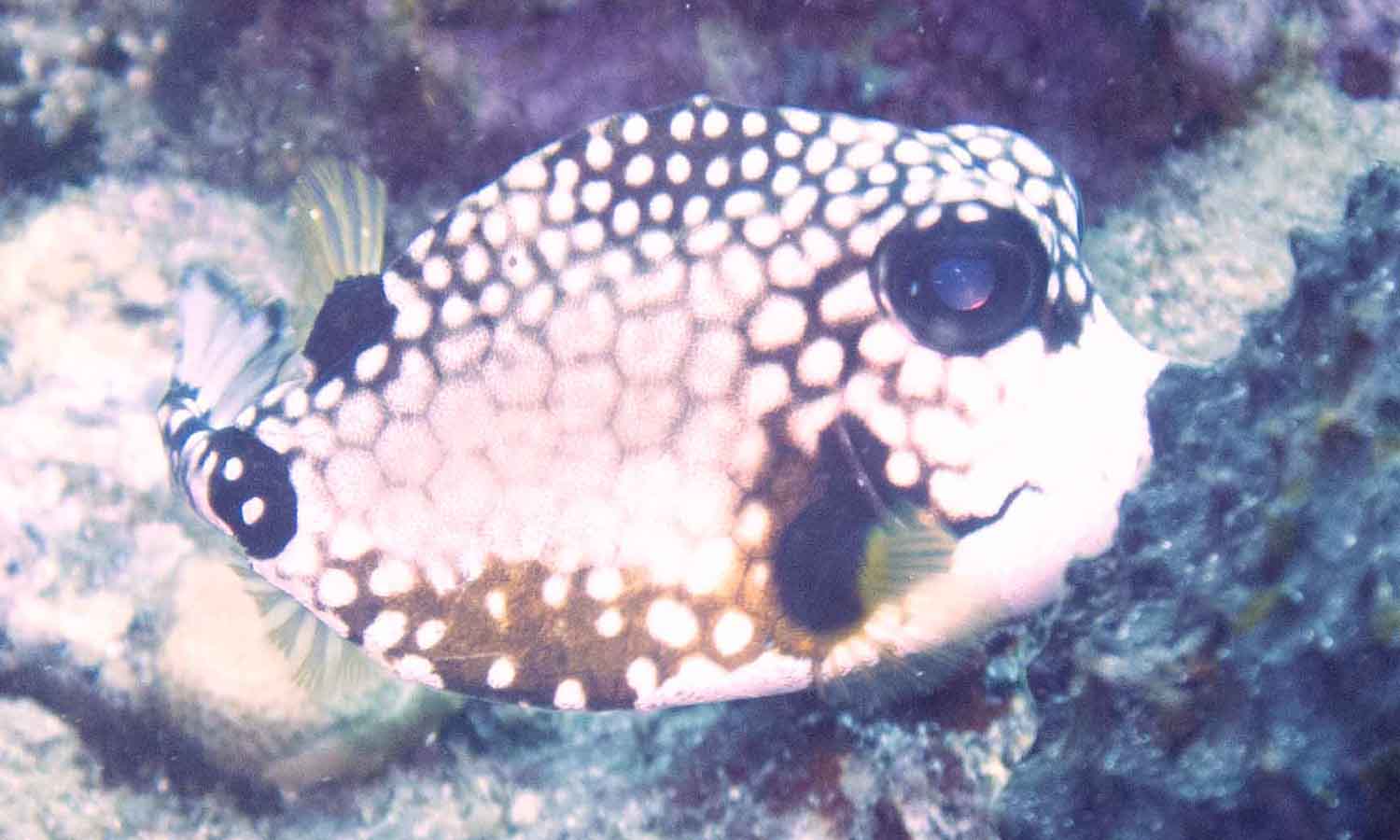
St. Vincent has per capita income of about US $3,800 per year , which is fairly typical for the Caribbean. It's about the same as Dominica, and a bit higher than Jamaica or Belize. The natives look fit, trim, and well dressed. The cars and trucks look well maintained. Key agricultural exports are bananas and marijuana.
There is no diet soda on the island, which may reflect the fact that thin people don't need diet soda, or it may be, as some say, that diet soda actually makes people fat. Economists love these causality questions like chickens and eggs.
One indigenous form of transportation is the dollar bus. For one dollar EC (about $0.37 US) the bus will give you a ride to or from town. The buses are Japanese built mini-buses with four rows of seats. It's legal to stuff 18 people in each which they mostly do.
A couple of us ventured into Kingstown, the capital, where we saw thousands of locals but hardly any fellow tourists. The restaurants in Kingstown were, on the whole, unappealing, and there was only one good bar Basil's. The single souvenir shop sold some terrible junk. I failed in my quest to find a carved fish from St. Vincent for the collection in my upstairs bathroom.
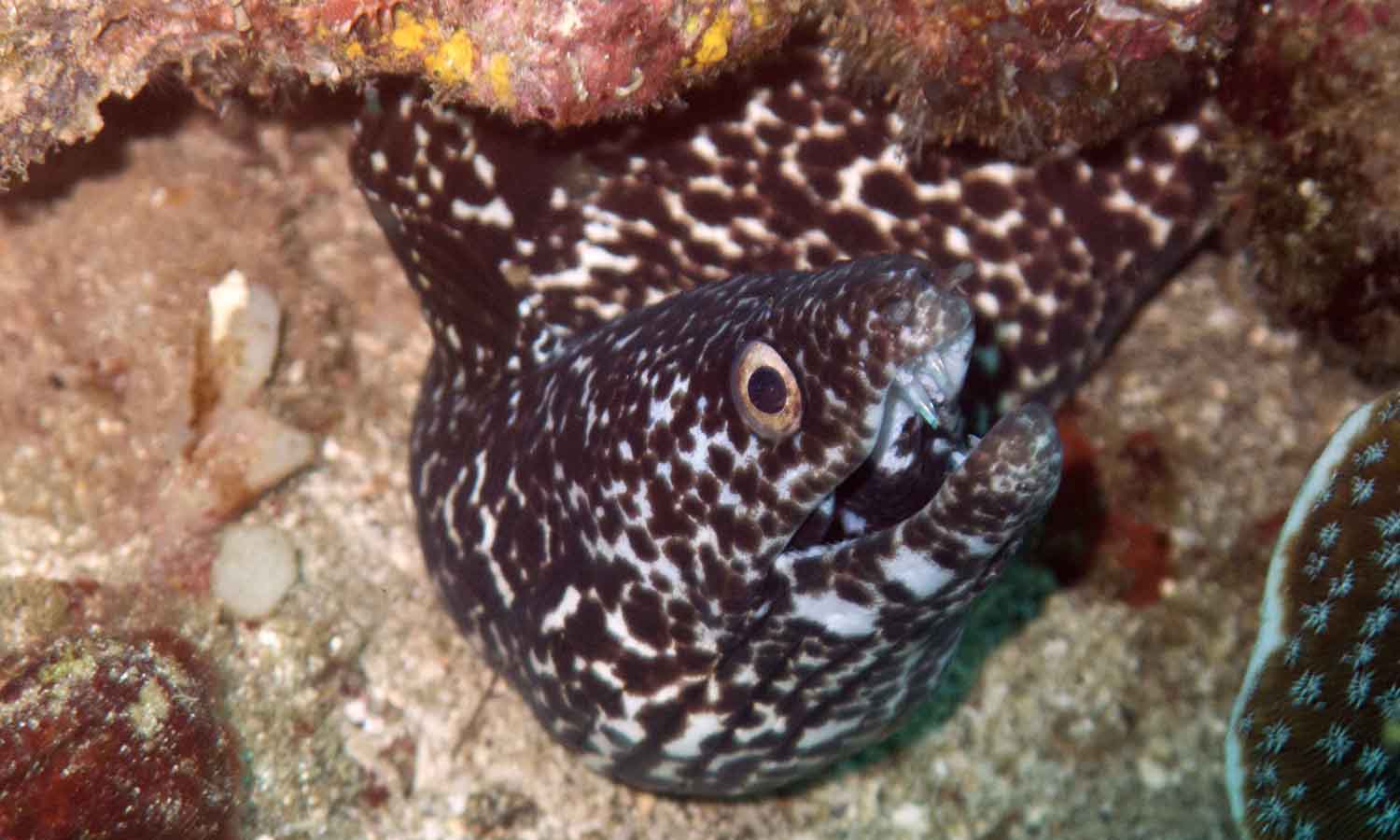
On Wednesday, we went for a tour of the island. Our first stop was Fort Charlotte (every Caribbean island has a fort), followed by the Botanical Gardens (every former English colony has a botanical gardens). One of the trophies in the gardens is a breadfruit tree brought to St. Vincent by Captain Bligh in 1793. We are all familiar with Captain Bligh's unsuccessful 1789 attempt to transport bread fruit from Tahiti to St Vincent on HMS Bounty. In St. Vincent, Captain Bligh is a local hero of sorts, and there is a very nice local rum named after him. (p.s. Sunset Captain Bligh Rum won a gold medal in the 4th Annual Polished Palate International Rum Competition this year. Sunset Very Strong over-proof rum won bronze. Unfortunately, you can't legally carry this stuff on a plane.)
From the botanical gardens, we set off to the movie set for Pirates of the Caribbean. The first and second movies in the franchise were filmed on location on St. Vincent, where the sets remain. A highlight of the visit was a very nice lunch of Caribbean food, right in the movie set.
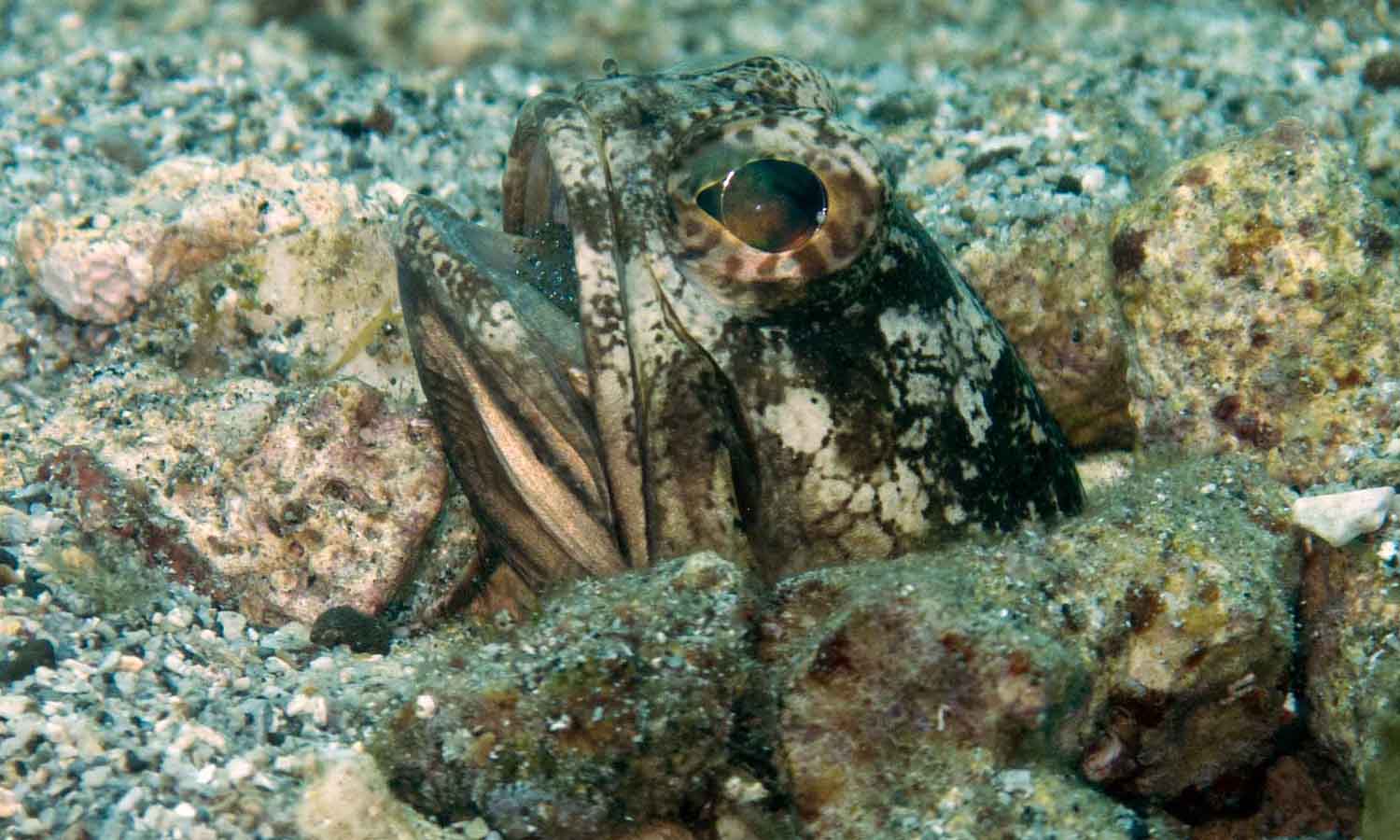
Next, we ventured on to the Dark View Falls. Access to the lower falls was over a suspension bridge made of bamboo logs and wire. Access to the upper falls involved some treacherous rock climbing through the rain forest.
Roads are narrow and the locals drive like maniacs. In St. Vincent, your horn is your friend. You sound the horn while barreling up (or down) the switchbacks. You sound to horn to warn pedestrians, and you sound your horn to say please and thank you There are, of course, lots of accidents.
Along the way, we passed construction for the island's new airport. Locals consider it a huge waste of money, but it will be worth it if it can draw in some new airlines. LIAT (aka Leave Island Any Time, or Luggage In Any Terminal) could stand some competition. We couldn't check our bags through to our destinations because LIAT does not have a reciprocal agreement with United or American. Strangely enough, it does have an agreement with US Air.
We concluded our visit just as we had begun it by feasting on jerk BBQ, served in a beach-front restaurant only on Fridays. This jerk was made with a green paste, only moderately spicy. We washed it down with the local Hairoun beer, which was not bad especially at $2.40 US a bottle.

![]() Follow us on Facebook!
or email us at "dive at patowmackdivers.com" replace at with @
Follow us on Facebook!
or email us at "dive at patowmackdivers.com" replace at with @
Copyright (c) 2011-2023 Patowmack Divers.com. All rights reserved.